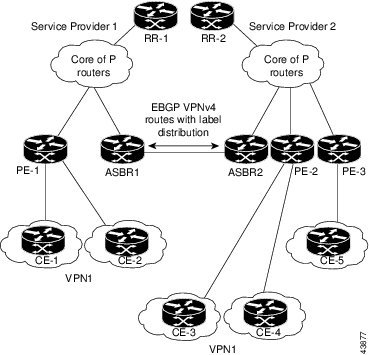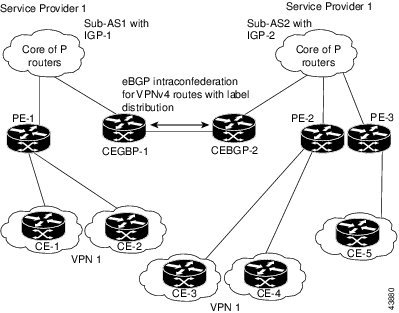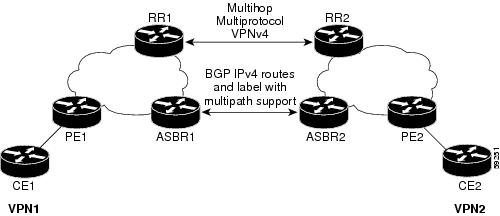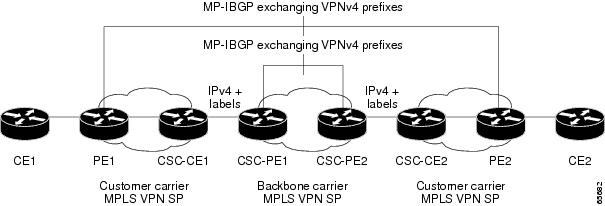Prerequisites for Implementing MPLS L3VPN
The following prerequisites are required to configure MPLS Layer 3 VPN:
- To perform these configuration tasks, your Cisco IOS XR software system administrator must assign you to a user group associated with a task group that includes the corresponding command task IDs. All command task IDs are listed in individual command references and in the Cisco IOS XR Task ID Reference Guide.
- If you need assistance with your task group assignment, contact your system administrator.
-
You must be in a user group associated with a task group that includes the proper task IDs for:
-
-
BGP commands
-
MPLS commands (generally)
-
MPLS Layer 3 VPN commands
-
-
- To configure MPLS Layer 3 VPNs, routers must support MPLS forwarding and Forwarding Information Base (FIB).
-
Before configuring external Border Gateway Protocol (eBGP) routing between autonomous systems or subautonomous systems in an MPLS VPN, ensure that all MPLS VPN routing instances and sessions are properly configured (see the How to Implement MPLS Layer 3 VPNs, for procedures)
-
These following tasks must be performed:
-
Define VPN routing instances
-
Configure BGP routing sessions in the MPLS core
-
Configure PE-to-PE routing sessions in the MPLS core
-
Configure BGP PE-to-CE routing sessions
-
Configure a VPN-IPv4 eBGP session between directly connected ASBRs
-













 Feedback
Feedback